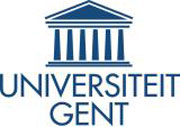 The “UGent Aquaculture R&D Consortium” groups the interdisciplinary research performed at Ghent University (www.ugent.be/en) in aquaculture at the Faculties of BioScience Engineering, Sciences and Veterinary Sciences. Three of the 2 departments involved in the UGent partnership will contribute to WP1, WP7, WP8 and WP9. Two research groups are participating i.e. the Laboratory of Aquaculture & Artemia Reference Center (ARC) and the research group Evolutionary Morphology of Vertebrates
The “UGent Aquaculture R&D Consortium” groups the interdisciplinary research performed at Ghent University (www.ugent.be/en) in aquaculture at the Faculties of BioScience Engineering, Sciences and Veterinary Sciences. Three of the 2 departments involved in the UGent partnership will contribute to WP1, WP7, WP8 and WP9. Two research groups are participating i.e. the Laboratory of Aquaculture & Artemia Reference Center (ARC) and the research group Evolutionary Morphology of Vertebrates
Tasks inside the project
ARC has the lead of WP 8 and the Evolutionary Morphology of Vertebrates group contributes to more tasks WP9 and has the lead of Task 2.
Relevant experience regarding major tasks and staff profile
The Laboratory of Aquaculture & Artemia Reference Center (ARC) was set up in 1978 and focused on the production and use of Artemia resources in fish and shellfish aquaculture. Since the mid 80's research activities extended to fish & shellfish larviculture-related fields a.o. lipid and vitamin requirements, microbial management in larviculture systems, egg and larvae quality, use of enriched Brachionus and Artemia, effects of immunostimulants and other compounds on disease and stress resistance. The group has more than 30 years of experience with the live food production and use in larviculture of different species of fish and shellfish. Primarily this refers to biological, zootechnical and mainly nutritional aspects. For this purpose standard research facilities have been developed for the production of live food (micro algae, rotifers and brine shrimp), a multi-purpose pilot hatchery with cylindro-conical and flat-bottom tanks, various culture installations for nutrition and reproduction studies, insulated rooms for microbiological research, etc. Furthermore a well-equipped chemical laboratory for standardised biochemical analyses (e.g. quantitative determination of lipid classes, fatty acids, vit. C and E), and facilities for the preparation of specific emulsions and formulated diets exists.
To date, research on nutritional requirements of several marine (7 species) fish larvae, fresh water (3 species) fish larvae, crustacean larvae (7 species) and bivalve larvae (3 species) have been conducted and published in international journals.The experience of the lab in marine aquaculture is also reflected in the close to 300 publications in international journals, books and proceedings. The expertise in live food production combined with the knowledge on nutritional requirements of different marine and fresh water larvae provides good guarantees for a smooth integration of ARC in this research program.
The group has organized 4 international ‘larvi’ symposia dealing with fish and shellfish larviculture. ARC has coordinated/participated in several international projects in the FAR, FAIR, CRAFT and INCO programs of the EC: the most recent ones Rotigen (Q5RS-2002-01302), INCO Artemia biodiversity (ICA4-CT-2001-10020) and Mud crab (ERB-IC18-CT-97-0189).
Project participants
Prof. Peter Bossier has experience in microbial ecology, molecular genetic and larviculture. He is currently focussing his research on host microbial interactions in larviculture. In recent years, gnotobiotic experimental test systems have been developed, which have allowed verifying the importance of quorum sensing, polyhydroxybutyric acid and heat shock proteins in host microbial interactions. He produced more than 70 international papers.
Prof. P. Sorgeloos has a long standing experience in larviculture and larval food production. He was the founder of the Artemia Reference Center. His research is focussing on the larval food chain, with special emphasis on HUFA requirement of marine fish and shellfish. He produced more than 260 international papers.
The research group Evolutionary Morphology of Vertebrates
with Prof. D. Adriaens as director, is incorporated in the Department of Biology. The main research topics with relevance to this project are: Geometric morphometrics analyses of shape changes in teleosts, ontogeny of form and function of the feeding apparatus in teleosts, and 3D-microscopic anatomical analysis of cranial systems in teleosts. On-going research projects with relevance to this project focus on the ecomorphology of head shape dimorphism in European eel, as formed during ontogeny (UGent Research Council (01J09107). This is part of the on-going PhD study of Celine Ide. Joachim Christiaens and Barbara De Kegel have experience in the practical implementation of the histological sectioning.
Staff profile
Prof. D. Adriaens has experience in functional morphology and ontogeny of vertebrates, mainly fishes. Research is currently focusing on various aspect of larval and adult morphology of the musculoskeletal system of the feeding apparatus in teleost fishes, thereby relying on histology, geometric morphometrics and graphical 3D-reconstructing. On-going project deal with head shape dimorphism of European eel and cranial deformities in commercial fish species during larval and juvenile stages (seabream and seabass).
Relevant publications
Marques A, Dhont J, Sorgeloos P, Bossier P 2004. Evaluation of different yeast cell wall mutants and microalgae as feed for gnotobiotically grown brine shrimp Artemia franciscana. J. Exp. Mar. Biol. Ecol. 312: 115-136.
Sorgeloos P, Dhert P, Candreva P 2001. Use of the brine shrimp, Artemia spp., in marine fish larviculture. Aquaculture, 200: 147-159.
Verschuere L, Rombaut G, Sorgeloos P, Verstraete W 2000. Probiotic bacteria as biological control agents in aquaculture. Microbiol.Mol. Biol. R. 64: 655-671.
Ristovska M, Karaman B, Verraes W, Adriaens D 2006. Early development of the chondrocranium in Salmo letnica (Karaman, 1924) (Teleostei: Salmonidae). J. Fish Biol. 68(2):458-480.
Verhaegen Y, Adriaens D, De Wolf T, Dhert P & Sorgeloos P 2007. Deformities in larval gilthead seabream (Sparus aurata): a qualitative and quantitative analysis using geometric morphometrics. Aquaculture 28: 156-168.
Ide, C., C. Belpaire & D. Adriaens (2008) – Morphological variation in an early developmental stage (glass eel) of European eel Anguilla anguilla. Annual meeting of the European Aquaculture Society (Krakow, Poland – September 15-18) (oral contribution).